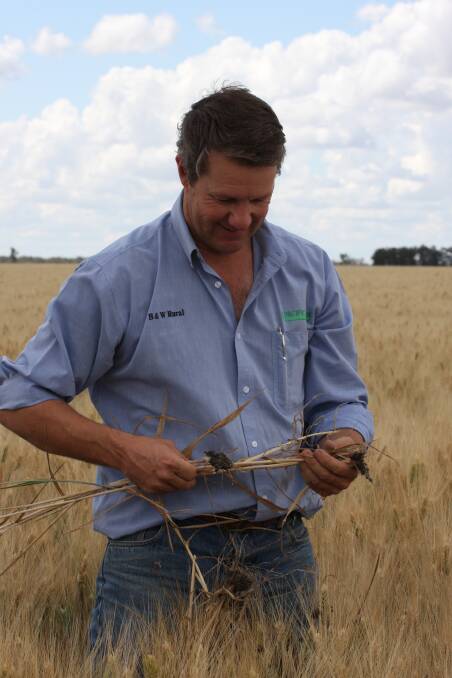
DNA testing soil to identify crop diseases could mean increased profit for farmers by improving planning decisions.
Subscribe now for unlimited access.
$0/
(min cost $0)
or signup to continue reading
It’s currently estimated that cereal root diseases cost grain growers in excess of $200 million annually in lost production. Additionally, ascochyta costs the chickpea industry dearly in lost production each year.
Moree-based agronomist Robert Long said Crown Analytical Services in association with the South Australian Research and Development Institute (SARDI) can test soil samples using PredictaB DNA analysis to find issues before a crop is planted.
“DNA testing soil samples can detect all sorts of different diseases caused by either bacteria, fungi and nematodes,” Mr Long said.
By DNA testing soil for this fungus, growers might be able to avoid contaminated areas or, use the information to plant chickpeas more frequently.
- Agronomist Robert Long
“Essentially growers and advisors will get a risk rating for a wide range of pathogens including root lesion nematodes, crown rot, rhizoctonia, common root rot in wheat and now also ascochyta and phytophthora in chickpeas.
“The breakthrough at the moment is testing for ascochyta blight in chickpeas.
“By DNA testing soil for this fungus, growers might be able to avoid contaminated areas or, use the information to plant chickpeas more frequently than the recommended four-year rotation.”
According to Pulse Australia, for Ascochyta blight, unlike some insect control strategies, there is no economic threshold.
Management strategies are aimed at preventing the occurrence of disease and limiting its spread.
Mr Long said the DNA testing was an excellent decision-making tool for all growers.
“It allows growers to assess the risk of planting a paddock or zone and knowing the precautionary measures required if you do decide to proceed, based on this sophisticated scientific measure,” Mr Long said.
This type of soil testing won’t break the bank, either, with the new nine-pathogen PreDicta B test to cost around $200.
“Growers and advisors should pick the site that is most representative of the paddock or zone,” he said.
“For instance for the new chickpea test – pick an area on the northern edge that is closest to last years chickpea stubble.
“Also remember to add the spikes of remnant cereal stubble to get an accurate measure of Crown Rot risk.”
Mr Long said in the future, trials will look at disease mapping fields, which would help growers manage risks on a more targeted basis.

